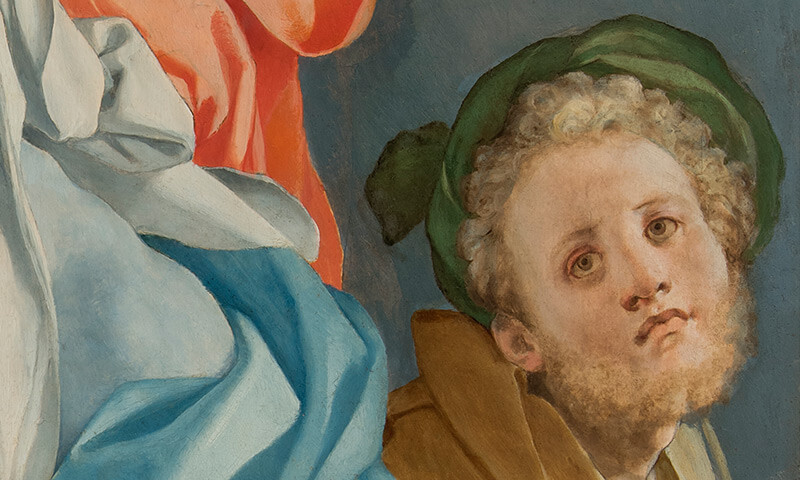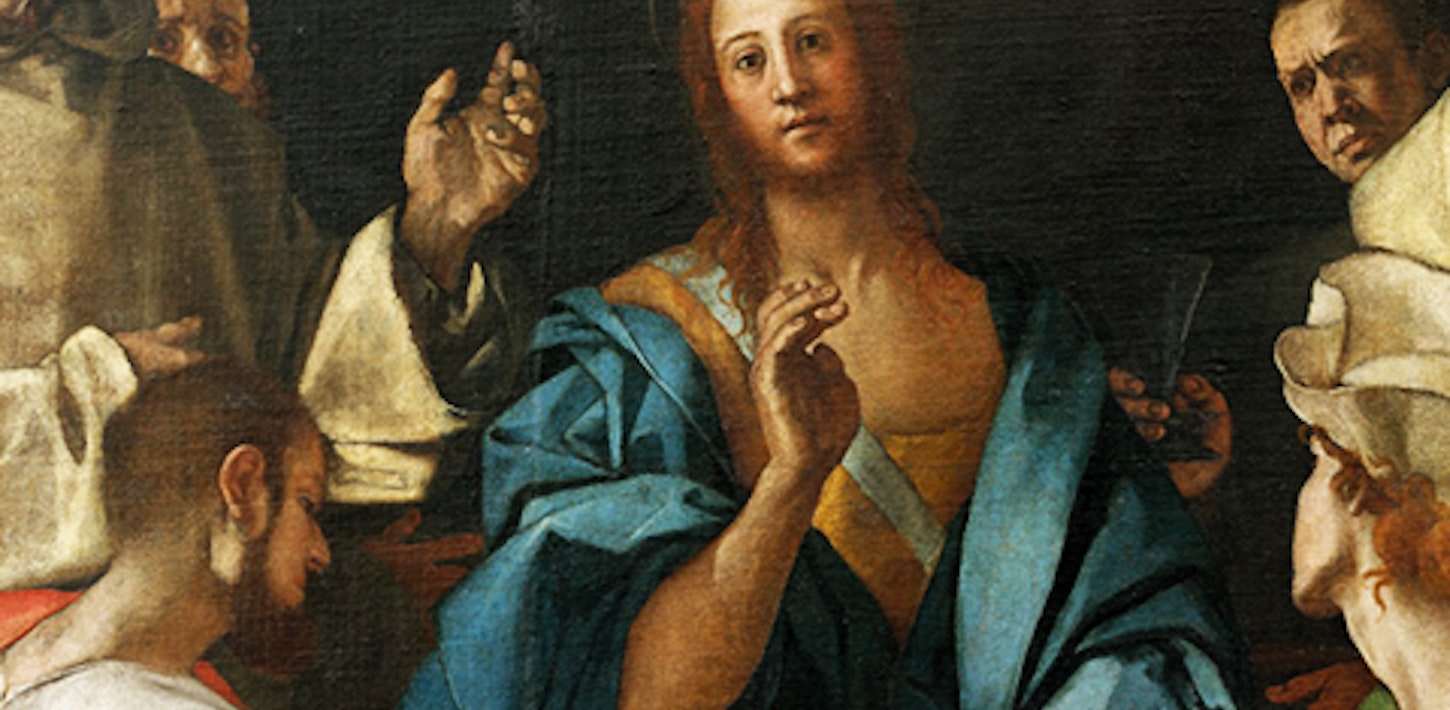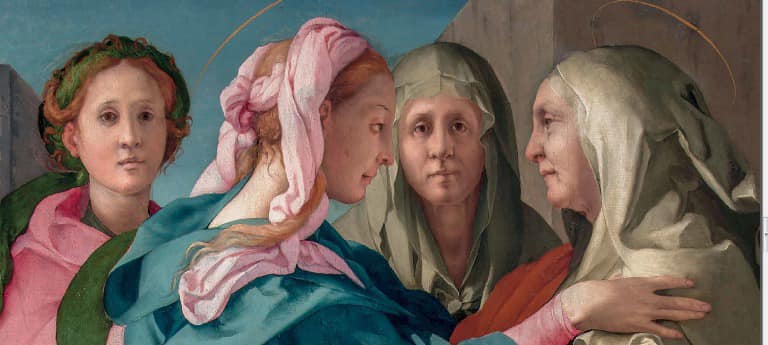
Pontormo, autoritratto
Have you ever heard of Jacopo Pontormo, the artistic genius of Mannerism?
This painter, born Jacopo Carucci, was a key figure in the artistic landscape of the 16th century. His work anticipated trends that were only fully manifested in the Baroque period, greatly influencing 17th century art.
In this post I tell you about his life.
Life of Jacopo Pontormo

Pontormo, La Cena in Emmaus (dettaglio)
Jacopo Carucci, better known as Jacopo da Pontormo, from his birthplace, had a difficult start in life. Orphaned as a young man, he was raised by his maternal grandmother.
His precocious inclination for art led him to study under famous masters such as Leonardo da Vinci and Andrea del Sarto, important masters who allowed him to develop a unique style that contributed significantly to the evolution of Italian Mannerism.
PONTORMO’S ARTISTIC JOURNEY BETWEEN INNOVATION AND ISOLATION
Jacopo Pontormo broke away from classical canons in his career, exploring new avenues of expression. His art, characterised by an original use of colours and compositions full of pathos, reflected his melancholic character and inner struggle.
Although he was appreciated by his contemporaries such as Raphael and Michelangelo, his style was misunderstood.
Among Pontormo’s most significant masterpieces are ‘Portrait of Cosimo the Elder’ and ‘Leda and the Swan’, works that highlight the influence of Leonardo da Vinci. Another example of his mastery can be seen in ‘Supper at Emmaus’ and, above all, in Pontormo’s ‘Visitation’, a work preserved in Prato and representing the high point of his art, in which emotions take over the canvas.
We should also not forget Pontormo’s frescoes in the Villa Medicea in Poggio a Caiano, which add to the already fabulous ones by Filippino Lippi.
In Pontormo’s works transpires a certain melancholy that accompanied him throughout his life, perhaps due to the fact that he was an orphan and had the constant feeling of being alone. It is Vasari who first recounts Pontormo’s life and in a passage of his ‘Le vite de’ più eccellenti pittori, scultori e architettori’ he writes:
“to the room where he slept and sometimes worked, he climbed up a wooden ladder, which, once he was inside, he pulled up with a pulley so that no one could climb it without his will or knowledge”.
Pontormo’s life was marked by moments of great isolation, especially during the plague of 1522. His last years were devoted to the decoration of the Medici chapel in San Lorenzo in Florence, a project that was completed by his pupil, Bronzino.
His personal notes in ‘il libro mio’ reveal a deeply solitary and tormented man, characteristics that were reflected in his works.

Pontormo, Visitazione (dettaglio)
Jacopo Pontormo left an indelible mark on the history of art, not only as a mannerist artist but also as a forerunner of the Baroque.
His ability to innovate and convey intense emotions through his art made him an unforgettable master, whose legacy continues to inspire art-loving artists today.

